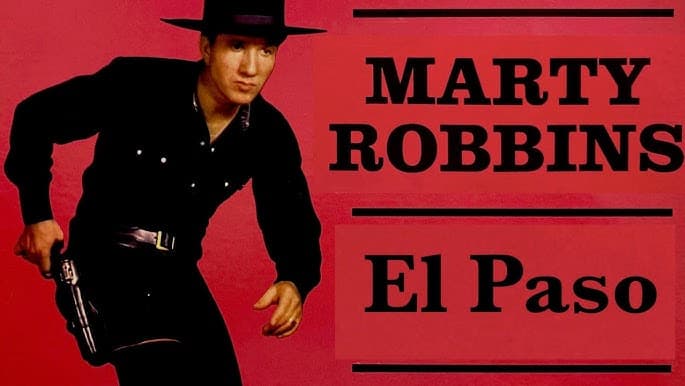
Love, Loyalty, and Loss: The Enduring Saga of El Paso
Ah, Marty Robbins. The very name conjures images of dusty trails, lonesome cowboys, and the kind of narrative songwriting that just isn’t made anymore. And among his vast catalog, few songs resonate with the enduring power and heartbreaking beauty of “El Paso.” Released in 1959 as part of his groundbreaking album Gunfighter Ballads and Trail Songs, this epic ballad wasn’t just a hit; it was a phenomenon. It galloped right to the top of the charts, reaching Number One on the Billboard Hot Country Singles chart and also crossing over to claim the Number One spot on the Billboard Hot 100 pop chart in early 1960. Think about that for a moment: a six-minute-long cowboy ballad dominating both country and pop airwaves in an era before widespread crossover appeal was commonplace. It was a testament not only to Robbins’ masterful storytelling but also to the song’s universal themes and captivating melody.
For those of us who grew up with the sounds of the radio as our constant companion, “El Paso” wasn’t just a song; it was a mini-movie unfolding in our minds. It told a complete, self-contained story, a vivid tapestry woven with threads of love, honor, and ultimately, tragedy. The tale centers around a cowboy, a drifter by nature, who finds himself hopelessly smitten with a beautiful Mexican dancer named Feleena in a cantina in El Paso, Texas. Their love is passionate, consuming, but also fraught with peril. When a jealous rival makes a move on Feleena, our protagonist’s quick draw and fierce loyalty lead him to kill the man. The consequences are immediate and dire: he’s forced to flee, riding away into the vast, unforgiving desert, haunted by the image of his beloved.
The brilliance of “El Paso” lies in its masterful blend of poetic lyricism and narrative drive. Robbins, with his smooth, evocative baritone, paints a picture so clear you can almost feel the desert wind whipping around you and smell the dust on the trail. We follow the cowboy’s agonizing journey, his heart pulling him back to Feleena despite the mortal danger. The internal conflict is palpable: the instinct for self-preservation battling against an overwhelming desire to return to the woman he loves. And so, against all logic, he makes the perilous ride back to El Paso, knowing full well the fate that likely awaits him.
The ending, of course, is what truly cements “El Paso’s” place in the pantheon of classic country songs. The cowboy is cornered, outnumbered, and ultimately gunned down, dying in the arms of his beloved Feleena. It’s a conclusion that is both inevitable and heartbreaking, a poignant reminder of the high cost of love and loyalty in a world governed by a harsh, unyielding code. For older listeners, particularly, this song taps into a deep well of emotion. It’s a nostalgic journey back to a time when heroes were flawed, love was worth fighting (and dying) for, and stories unfolded with a grandeur rarely seen in modern music. It speaks to a certain romanticism about the American West, a yearning for simpler times, even if those times were often brutal. The waltz-time rhythm, the mariachi-style instrumentation, and Robbins’ captivating delivery all work in perfect concert to create a piece of musical artistry that transcends genre and generation. “El Paso” isn’t just a song; it’s a legend, etched forever in the hearts and minds of those who appreciate a truly great story set to an unforgettable melody. It’s a reminder that some tales, like some loves, are meant to be timeless.